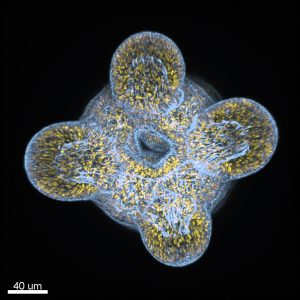Mechanisms of lifelong tentacle development in a sea anemone
Aissam Ikmi
European Molecular Biology Laboratory (EMBL), Heidelberg, Germany
Cnidarians, such as sea anemones, corals and hydrozoans, have remarkable developmental plasticity. Similar to plants, these animals can generate organs and secondary axes throughout their entire lives. This ability to continuously build new body parts is comparable to regeneration, as both require activation of patterning mechanisms in a differentiated body plan. However, unlike regeneration that is induced by damage or injury, lifelong organogenesis is subject to environmental modulation, a key strategy that allows both cnidarians and plants to continuously adjust their developmental patterns with unpredictable fluctuations of food supply. By studying the post-embryonic development of tentacles in the cnidarian Nematostella vectensis, I will present how a sea anemone deploys organogenesis throughout its long-life span. Based on mutant analyses, I will discuss whether this process invokes embryonic mechanisms or unique regulatory-logic.










You must be logged in to post a comment.